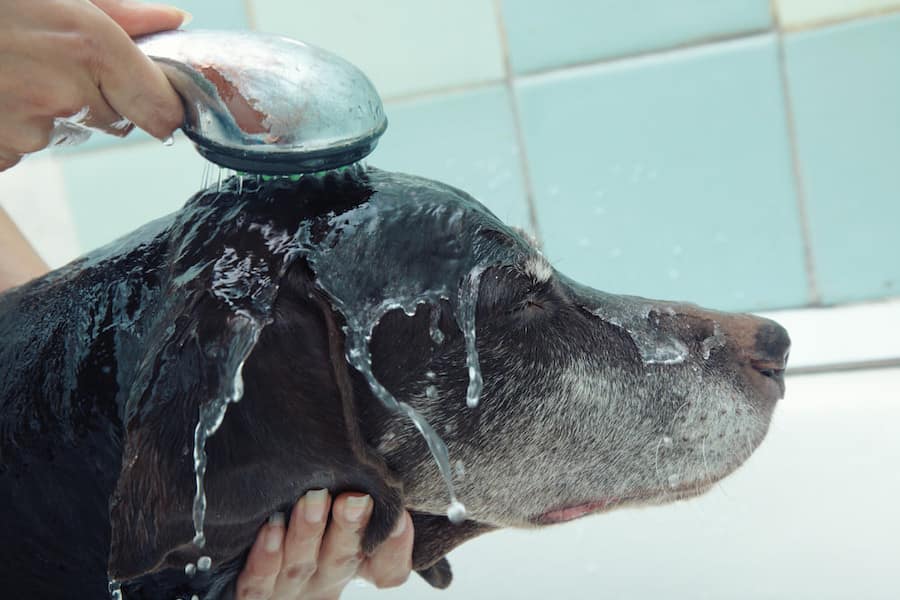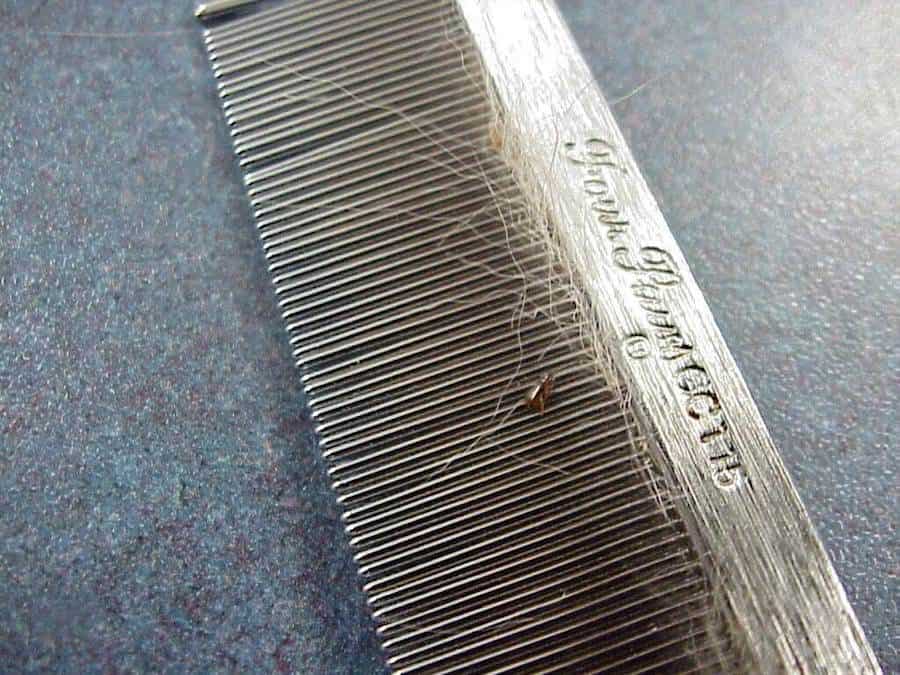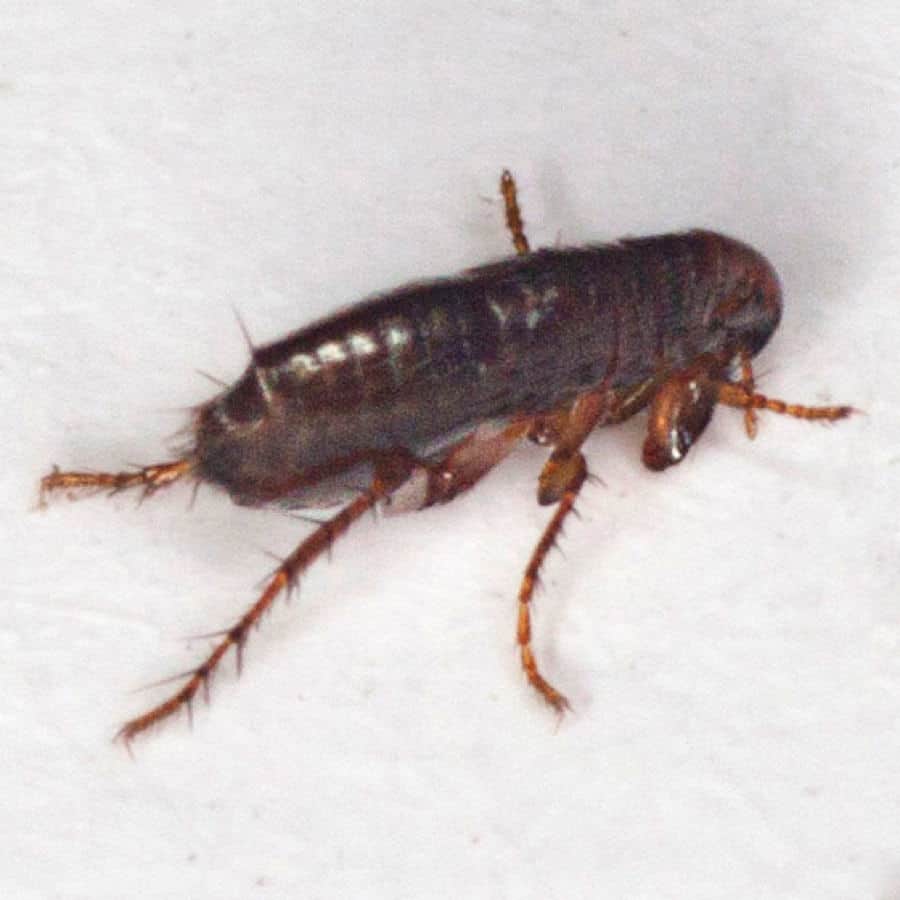How High & Far Can Fleas Jump?
In the intriguing world of fleas, there are questions that definitely need to be answered. Do fleas jump or hop, or are they actually flying from place to place? Though they’re never a pest you want to see in your home, they impress with undeniable speed and agility. Just how do they achieve this movement though?
Understanding how these pests move can be a step in learning how to better deal with them when encountered.
Do Fleas Jump?
If you clicked “yes” on the buzzer, you would be correct. Fleas do jump, and over great distances. These jumps allow them to maneuver onto household pets, and around the home and outdoor landscape with ease.
Cat fleas (Ctenocephalides felis) have an average jump distance of 8 inches. These horizontal leaps are nothing to sneeze at when you consider that these bugs measure under 1 inch at their longest. At 5.2 inches, the heights they get to is another feat, considering their average body weight is between 1.5 and 3.5 ounces.
Some cat fleas exceed expectations and are able to jump up to 7.9 inches, with a horizontal jump of 19 inches.
Dog fleas (Ctenocephalides canis) on the other hand, jump around the same height, but their distance varies. At their maximum, they could leap a horizontal distance of 20 inches, with a minimum of 12 inches, meaning dogs can get fleas rather easily should they come into relatively close contact with another infested canine.
All this long and high jumping brings another question to the fore. With fleas being so small and light, how are they able to complete such outstanding jumps? It’s all in the toes.
The mechanics of how a flea jumps helps us to see just how much is going on during each of these seemingly simple movements. Yes, while I suppose they are simple for the flea who does it naturally, the breakdown may surprise you.
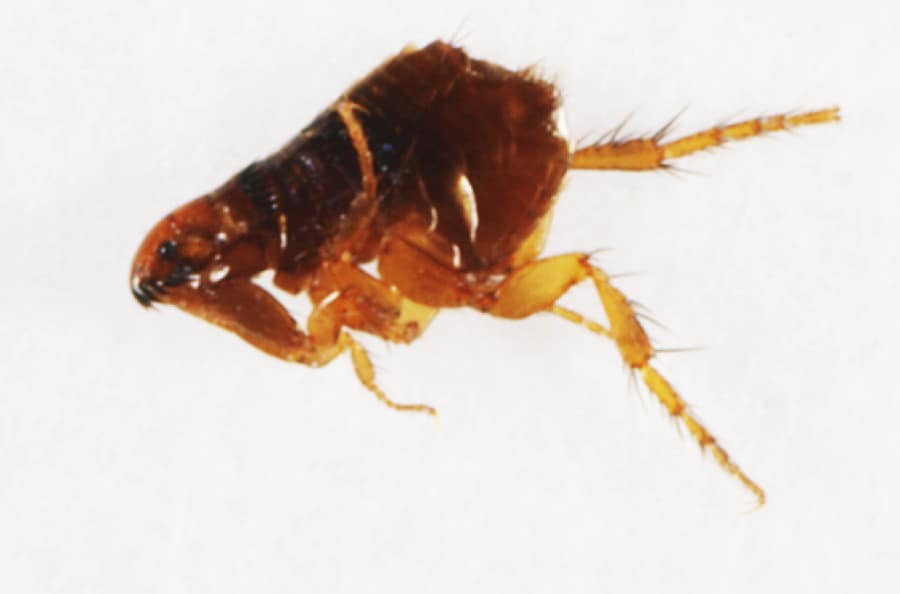
It was first explored in a 1967 study conducted by H.C. Bennet-Clark and E.C.A Lucey at the University of Edinburgh from the Departments of Zoology, and Research Film Unit and the Institute of Animal Genetics respectively. Their theories and findings were later built upon by others in the field, including Gregory Sutton, a research fellow at Cambridge University.
To have concrete evidence on how fleas actually jump, cameras are necessary to record the action. In the case of Sutton’s research, fleas were filmed jumping 51 times.
According to Bennet-Clark and Lucey’s initial research, the base mechanics behind a flea’s jump are as follows:
- The flea is almost vertical at the beginning of the jump
- The femur (upper section) of its hind legs is pulled forward first
- Approximately 100 milliseconds pass before the bug makes a jump
- The flea pushes down through its tibia and tarsus
- The tibia extends, pushing the flea both forward and upward
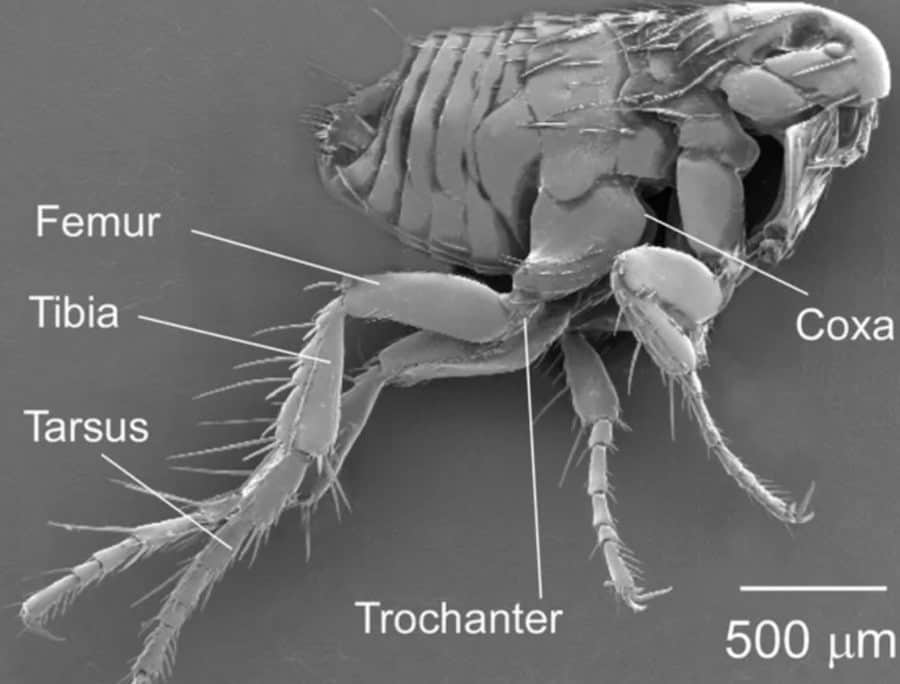
Later Sutton’s research highlighted that in all jumps, the fleas’ feet touched the ground, though the force of those jumps was not transferred to the ground. This corroborates the above theory that fleas use their lower-legs to push off.
With the aid of spiny gripping structures on their legs, fleas brace themselves before take-off, which aids their consistent jump success rate.
With so much going on when it comes to the details of a flea’s jump, it leads to other considerations about this pest. I’ll touch on a few more.
Can Fleas Fly?
To the untrained eye, it can often appear as though fleas are flying. However, they cannot fly as fleas are wingless insects. They lost their wings long ago through evolution. This is the case for many parasitic insects. That’s probably just as well, as pest control for these creatures would potentially be even more technical if they still did fly.
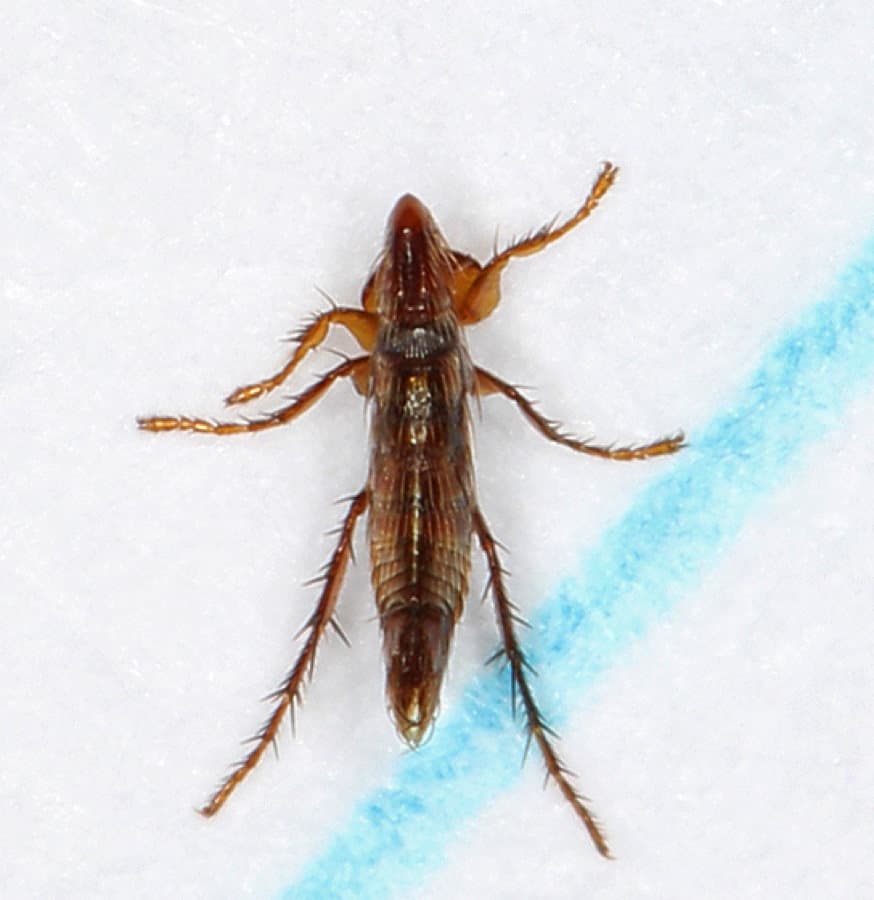
Evolution is an interesting thing, and in fleas, it’s no different. Though they don’t have wings, a flea’s thorax still boasts a resilin hinge where the body and legs attach. This rubbery protein is the same one that forms a similar hinge in flying insects. What this does is aid the fleas’ jumping mechanisms – which is one of the reasons they can propel themselves so high and far.
Though they might not be able to “fly” in the traditional sense, a description that’s often attached to them is apt: “insects that fly with their legs,” based on the use of resilin, which compresses whenever a flea crouches. In flying insects, the tension and compression from their wing strokes is absorbed by resilin.
For fleas, at the moment just before jumping, the resilin pads’ energy bursts through the legs. The follow-up lever effect sees the jump through.
With this in play, it’s easy to see why many often think that fleas can fly. Propelling themselves well over 100 times their body length at times, it can appear as flight in motion. This though, as explained here, is far from the case.
Wondering what else fleas can or cannot do? Let’s move on.
Can Fleas Climb Vertical Objects?
This may not be something that makes you feel any better about these blood-suckers, but yes, fleas can indeed do this. luckily though, it is not their preferred means of getting around.
For the most part, fleas will launch themselves up and onto a prospective host. After that most of their time is spent walking around in their new home. When fleas pick an “animal home” they often won’t leave unless the animal dies. They’re unfortunately loyal in that way.
Since they spend the majority of their adult lives attached to a host, there’s little reason to do much more than walk to get around. It lets them save the energy that’s required for jumping.
As for jumping up and walking around on you or those you love – don’t worry about that. Fleas’ jumps are impressive, but in relation to us, only reach our ankles. In the event a flea does decide to jump and grab hold, they usually just take a bite and dig in. Their next move isn’t to crawl upwards.
While it doesn’t happen often, fleas have been observed climbing up walls. This can occur when they’re trying to escape pesticides.
How Do Fleas Get Into the Home?
You have to be vigilant to maintain a flea-free home. As pets are their main means of entry, I always make sure to check mine regularly for even the fleeting signs of fleas. This simple process has saved me lots of time and energy on having to deal with budding or fully-blown infestations.
As stated before, pets are a magnet for fleas. Their bodies present a perfect opportunity for fleas to hide, feed, and reproduce. When eggs are inevitably laid in your dog or cat’s fur, it’s only a matter of time before they fall off. That’s because there’s nothing sticky to keep them attached. Over time if the right conditions are in place, the life cycle will begin anew. Unfortunately, this can result in an infestation.
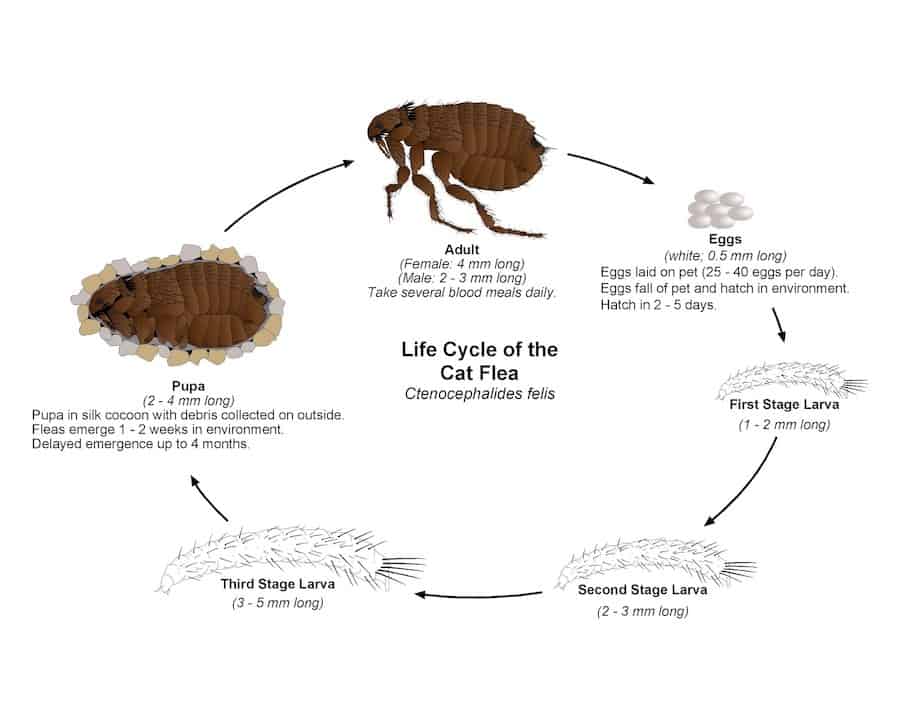
Stray animals, birds, and other critters can also be a concern. As strays are usually outside for long periods, it’s near impossible that they won’t pick up fleas along the way. If you decide to take one in, remember to check and groom it as you would any other pet to make sure you get rid of existing fleas.
Birds, mice, and other smaller animals that are able to enter your home unexpectedly can leave behind fleas in their wake. If you regularly leave windows or doors open, conduct routine checks to make sure you don’t have fleas.
If your children love playing outside, you’ll have to be careful and do your checks. Fleas can hang about in the dirt, grass, and other outdoor hotspots where children like to play. Without knowing it, they can pick up fleas during playtime and bring them indoors on clothing, and so on. Getting rid of fleas in your yard if you have an infestation is essential if you want to keep other areas and pets flea-free.
If you’ve just moved into a house or apartment, check for fleas before you settle in. While you might be flea-free, the previous owners or occupants might not have been. Fleas have no problem staying cocooned until vibrations stir them. This will cause them to hatch and if they find a host to feed on, the rest is history.
You can prevent, or curb flea infestations with regular house and pet checks. Get other family members or occupants involved where possible so everyone keeps an eye out. Vigilance and consistency are key to keeping fleas away.
Summary
The initial question has been answered – fleas can jump. Not only that, but they do so with great height, length, and agility. The various mechanics required for these pests to complete one jump, make it clear why they prefer to stay on hosts walking around, as opposed to jumping from host to host over the course of their lives.
With this new knowledge in mind, you should be better equipped to handle any case of fleas. You now know there’s no need to fear fleas jumping onto you and making a mad dash for your hair or upper body. They simply don’t desire to. With consistent checks, grooming, and the application of anti-flea treatments for domestic pets, and household pest maintenance, you can be in the clear from fleas.


